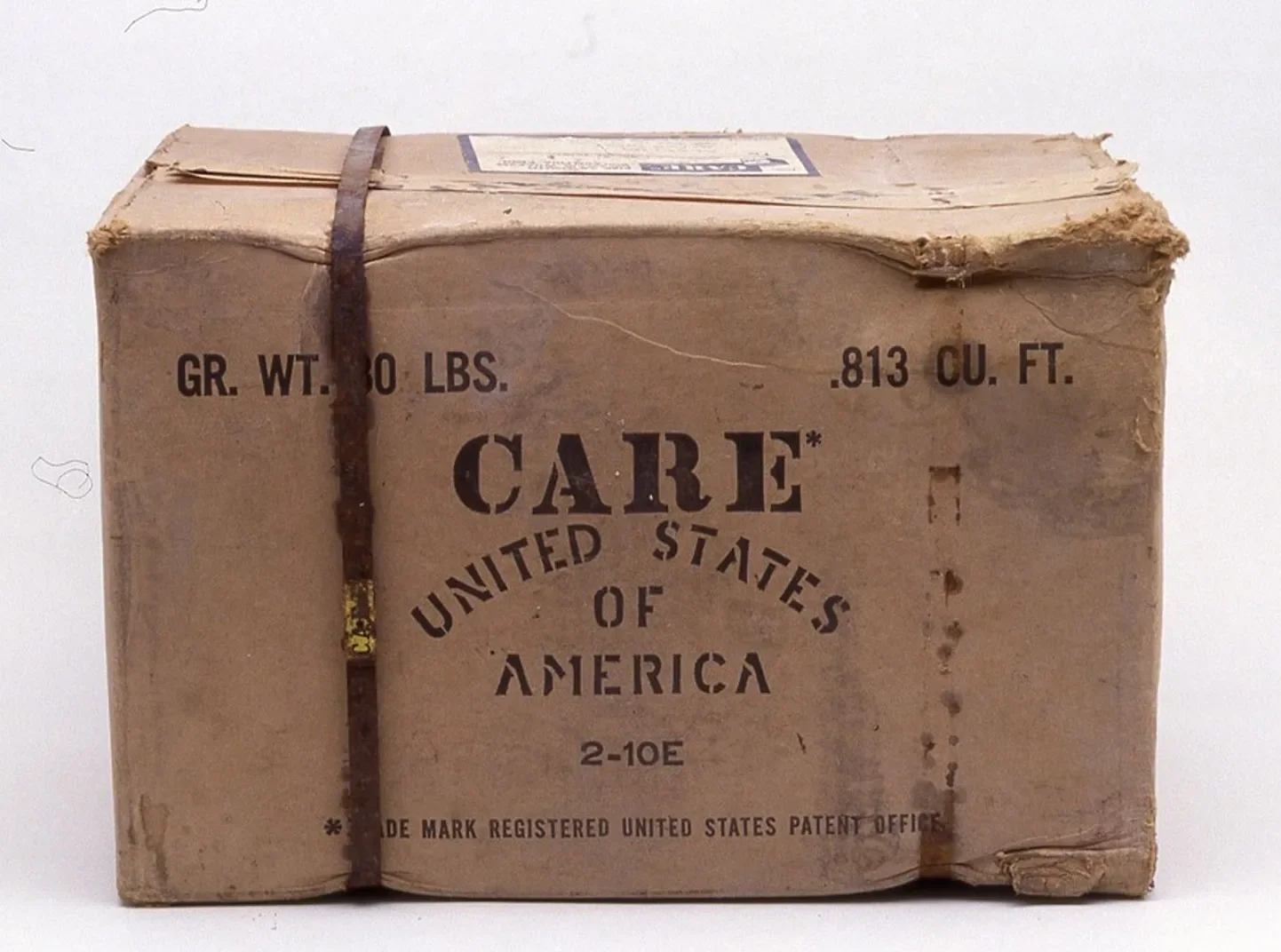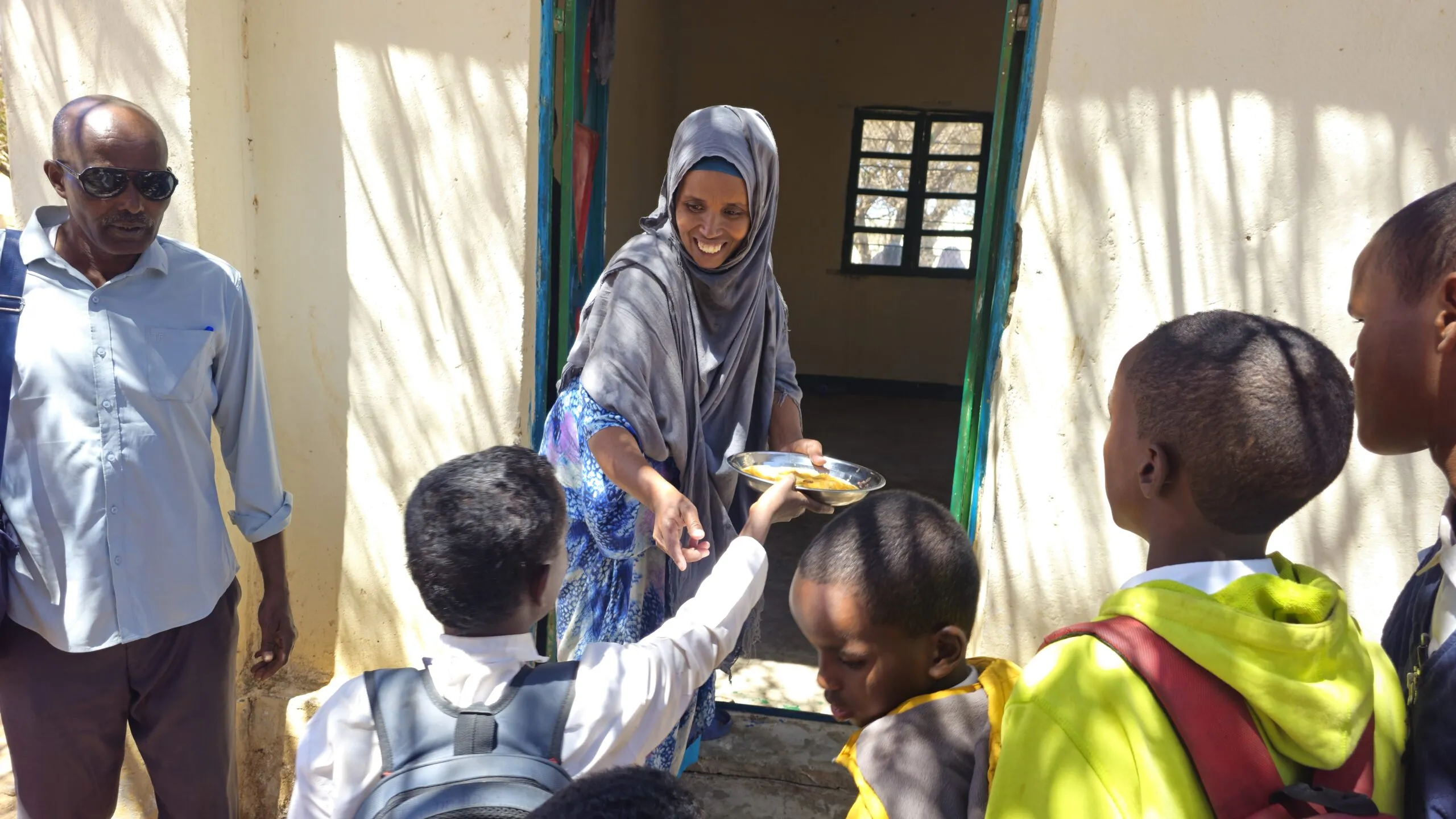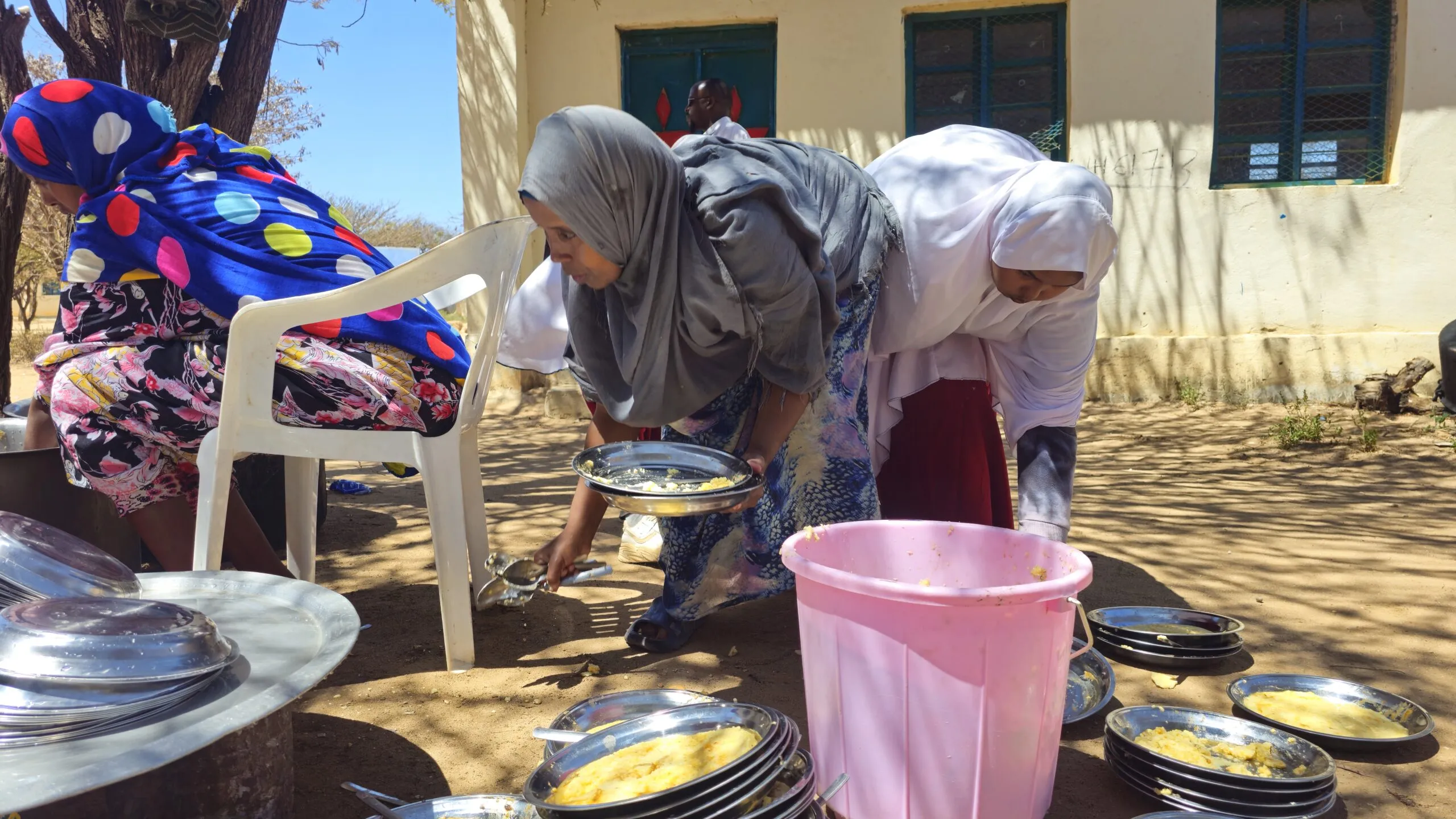When drought devastated her small community in Somaliland, 43-year-old Muna faced a heartbreaking reality. Let her son and daughter stay in school, or make sure they had enough to eat.
“I didn’t know how I could feed them,” she says. “I had to keep them at home to help me find something to eat. Sometimes they had to shine shoes in the streets to make enough to afford food.”
Failed harvests. Empty water tanks and wells. Livelihoods crumbling. In Somaliland, this has been the reality many families face after years of drought.
But things began to change when CARE’s school meals project came to Muna’s children’s school. Before the program, the schools were not able to provide meals to the pupils. Now, as a volunteer with the program, Muna can prepare meals made from locally grown cereals, beans, and grains for her own children, as well as more than 380 other students.
“It gives me joy to see their happy faces,” Muna says, smiling herself as she portions meals out in bowls for the students.




